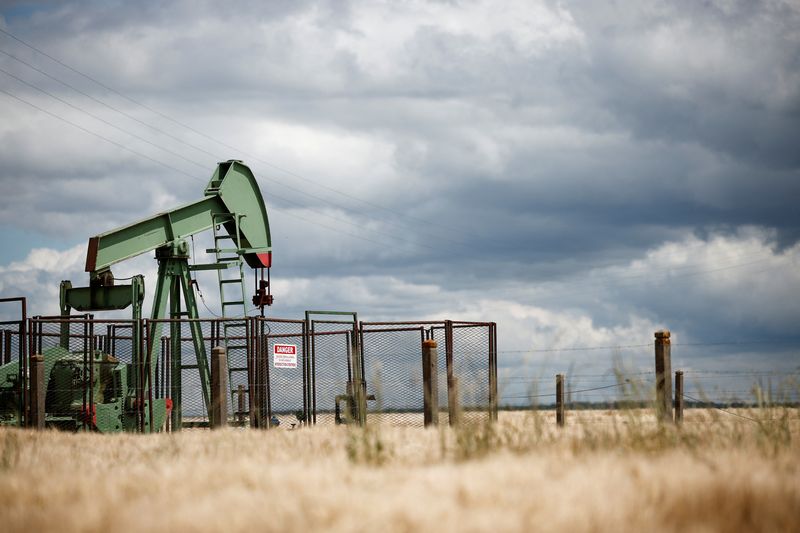Oil prices edge up on Gulf of Mexico storm ahead of US election results
By Scott DiSavino
NEW YORK (Reuters) -Oil prices edged up about 1% on Tuesday with a storm expected to cut U.S. output in the Gulf of Mexico and as the U.S. dollar weakened on Election Day with polls showing America's presidential race exceptionally close.
Brent crude oil futures rose 45 cents, or 0.6%, to settle at $75.53 a barrel. U.S. West Texas Intermediate (WTI) crude rose 52 cents, or 0.7%, to settle at $71.99.
"Crude oil is bid (up) on bullish supply/demand dynamics, geopolitics, and election fever, with a little weather thrown in for good measure," Bob Yawger, director of energy futures at Mizuho (NYSE:MFG ), said in a report.
The U.S. presidential contest between Republican former President Donald Trump and Democratic Vice President Kamala Harris hurtled toward an uncertain finish as Americans headed to the polls.
"The (election) result might not be known for days, if not weeks, and it will most plausibly be challenged and contested," said Tamas Varga, an analyst at PVM, a brokerage and consulting firm that is part of TP ICAP (LON:NXGN ).
The U.S. dollar slid to a three-week low versus a basket of other currencies as traders squared positions ahead of election results.
A weaker greenback makes oil less expensive in other countries.
The U.S. services sector accelerated to a more than two-year high in October as employment rebounded strongly, suggesting last month's near stall in job growth was an aberration.
The U.S. trade deficit surged to nearly a 2-1/2-year high in September.
Elsewhere in the U.S., energy firms in the Gulf of Mexico started evacuating workers from offshore platforms ahead of Tropical Storm Rafael, on track to strengthen into a hurricane this week. Analysts say the storm could reduce oil production by about 4 million barrels.
On Sunday, the Organization of the Petroleum Exporting Countries and their allies in OPEC+ said they would push back a production hike by a month from December as weak demand and rising non-OPEC supply depress markets.
Top oil exporter Saudi Arabia lowered the price for the flagship Arab light crude it sells to Asia in December.
BUSY WEEK AHEAD
Still, risk-taking remains limited with a busy week - including the U.S. election, the U.S. Federal Reserve's policy meeting and a meeting of China's National People's Congress keeping many traders on the sidelines, said Yeap Jun Rong, market strategist at IG International, a financial firm.
"Eyes are also on China's NPC meeting for any clarity on fiscal stimulus to uplift the country's demand outlook, but we are unlikely to see any strong commitment before the U.S. presidential results, and that will continue to keep oil prices in a near-term waiting game," Yeap said.
The chairman and co-founder of Gunvor, one of the world's largest oil traders, said there is little growth in oil demand and the industry is probably over-investing somewhat.
In the U.S., oil storage data is due from the American Petroleum Institute trade group later on Tuesday and the U.S. Energy Information Administration on Wednesday.
Analysts projected U.S. energy firms added about 1.1 million barrels of crude into storage during the week ended Nov. 1. [EIA/S] [API/S]
That compares with an increase of 13.9 million barrels in the same week last year and an average increase of 4.2 million barrels over the past five years (2019-2023).
Source: Investing.com
